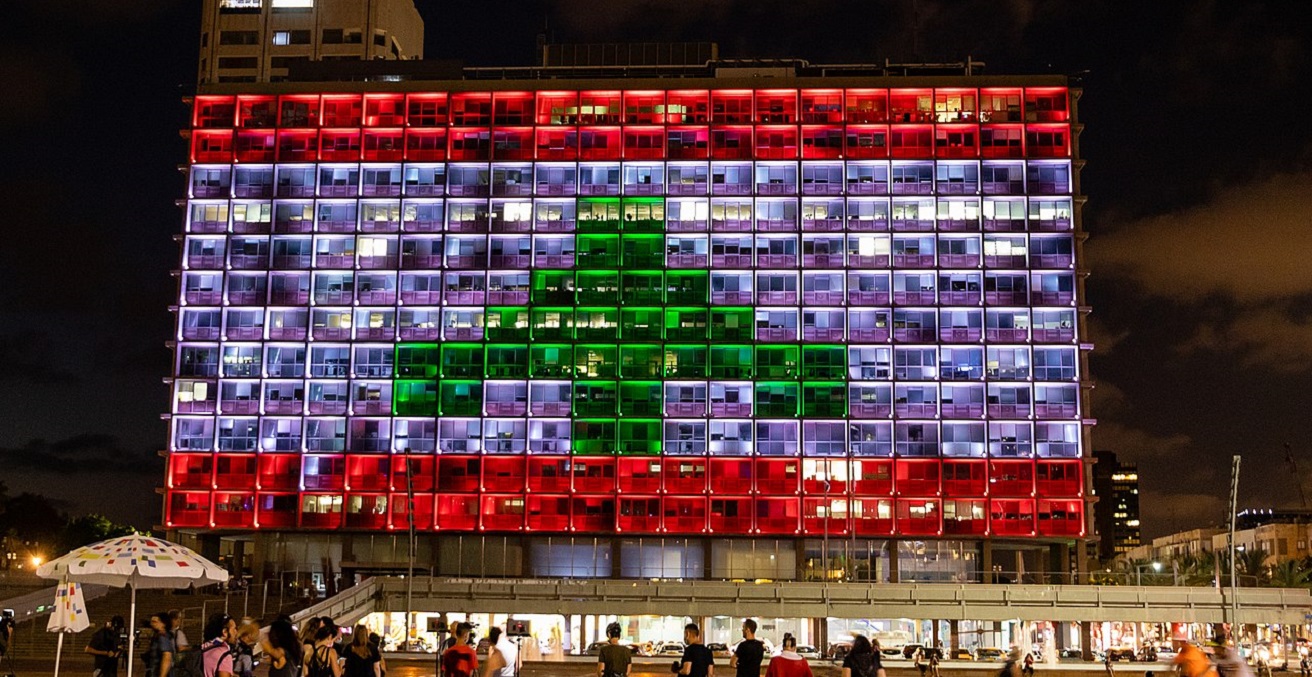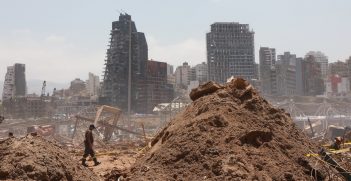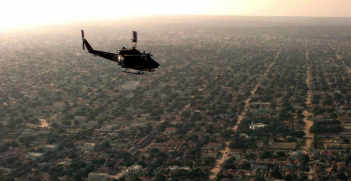Slow Onset Crises Ignored Over Big Booms in Beirut

The world appears to have jumped to Lebanon’s aid after the Beirut blast. However, the actual crisis is much longer and more complex than is being recognised.
Shaky mobile phone videos of the massive explosion in Beirut have now been seared into our collective memory. The third-largest explosion in history has been shared virtually around the world since it devastated the Lebanese capital on August 4. Caused by the ignition of 2,750 tonnes of stored ammonium nitrate in Beirut’s port, the explosion has killed almost 200 people, injured 6,000, and left over 300,000 people homeless. The mind struggles to understand how such a tragedy could occur.
Since the explosion, aid has been pledged from all corners of the world, with the aim of rebuilding the broken city and assisting its struggling population. However, Lebanon had been spiralling towards disaster well before the Beirut explosion, with the nation suffering endemic corruption and undergoing economic collapse. This begs the question of why it took an explosion of this magnitude for anyone to notice that Lebanon was on the edge of disaster.
Since last October, the Lebanese people have been protesting the corruption and negligence of their government. A burgeoning collection of crises, including diminishing food and fuel supplies, a banking crisis, hyperinflation, and COVID-19, have left the country in a dire state. Predictions estimate that up to 70 percent of Lebanese would fall below the poverty line by the end of 2020. While this crisis appears to have emerged fairly recently, the origins of this catastrophic spiral can be traced back much earlier. The Taif Agreement signed at the end of the bloody Lebanese Civil War in 1989 enabled the warlords to don suits and enter politics, and sectarianism had no defined end in sight. This has led to an elitist system and endemic corruption.
The Lebanese spiral represents what is known as a slow-onset crisis, or an emergency that “emerges gradually over time, often based on a confluence of different events” such as droughts and famines. Sudden-onset disasters, on the other hand, occur as a result of a distinct and singular event such as the Beirut explosion. These two forms of crises often garner different responses from the international community. Whilst the Lebanese banking crisis received some international attention, little was mentioned about the interconnected food and fuel issues, nor its humanitarian impact on the Lebanese population or the millions of Syrian and Palestinian refugees and migrant workers who reside in Lebanon. There are multiple reasons for this.
Firstly, the normalisation of tragedy and trauma in the Middle East by the Western world has led governments and the media to pay little attention to slow-onset emergencies. The United Nations Office for Coordination of Humanitarian Affairs highlights that often, the “international community waits until a slow-onset event reaches the acute phase” before taking action. Thus, when rapid-onset response tools are used in slow-onset situations, the result is “inefficient and ineffective.” Moreover, our collective overexposure to images of suffering often generates a dulled response. This phenomenon, called compassion fatigue, is a result of the intensity and overload of the 24-hour news cycle which bombards us with a daily dose of traumatic stories and imagery. When our self-preservation instincts kick in, we turn away from the pictures and, in doing so, the issues themselves.
In contrast, the stunning, visual nature of an acute disaster such as an explosion incites a much greater response than those slow onset, “invisible” issues. Such sudden events prompt heightened emotional responses and often lead to “impulsive action such as monetary donations.” Sudden-onset crises are also more likely to have a clear beginning and end. This creates a circumstance that donors are better able to visualise, and therefore more likely to contribute to.
Recently, slow-onset crises have been even further ignored. As the COVID-19 pandemic has resulted in a global economic downturn, so-called “giving tendencies” have dried up. The world’s preoccupation with the pandemic has also contributed to shrouding Lebanon’s more chronic issues as its relatively successful early handling of COVID-19 became the focus. The slow burn of the Lebanese government’s mismanagement has neither been highlighted nor questioned, given its obvious complexity. Indeed, since the Saudi-associated Prime Minister Saad Hariri resigned in November 2019 as a result of protests and the Iran-affiliated Hezbollah solidified their control, Lebanon’s oil-rich Arab neighbour has been far more reluctant to help. In February at the G-20 Summit, Lebanon’s skyrocketing debt was highlighted, and Saudi Arabia tentatively offered assistance on the condition that a realistic reform plan was established. Additionally, prior to the blast, attempts for economic reform and assistance which had entered a seventeenth round of negotiation with the International Monetary Fund were stifled due to opposition from Hezbollah. Such stagnation only worsened the compounding nature of Lebanon’s dire need.
Many of those institutions and international actors who were reluctant to step into the quagmire prior to August 4 jumped into action after the horrific scenes of the blast. This illustrates that the provision of aid links directly to the explosion’s abruptness. Whilst Saudi Arabia directed urgent humanitarian aid to Beirut, it was conspicuously devoid of political presence, highlighting that the explosion’s identifiable clean-up was seen as separate to previous humanitarian appeals. In the online aid summit headed by French President Emmanuel Macron soon after the explosion, almost US$300 million was pledged in direct support, sidelining the Lebanese government. Despite France’s significant aid pledge, reflective of its former colonial ties to Lebanon, its leading role post-crisis has also created the perception that “Lebanon’s future is being determined without the Lebanese.”
Meanwhile, contributions from other countries such as Russia, Iraq, Turkey, and Iran have been sidelined in favour of Western assistance. Nevertheless, less wealthy countries have also donated, including Bangladesh which had four nationals killed and a naval vessel damaged in the blast. The UN is seeking $565 million to put toward “lifesaving relief towards reconstruction and recovery.” These sums are likely to only scrape the surface of the possible $15 billion cost of the damage, suggesting that the rapid response will fall short of the long-term need.
According to Peter Salisbury from Chatham House, policy makers “think in relatively short term, and pay attention to things that generate headlines.” As chronic crises increase globally with growing numbers of refugees, internally displaced people, and the worsening climate crisis, it behoves the international community to consider tackling such challenges earlier rather than later. As the dust settles over Beirut and our news cycle has turned to its next target, the crisis-weary Lebanese are only just beginning to grapple with the trauma and tribulations of this newest devastation. Evidently, waiting for a big boom before opening our pockets is only adding more complexity to the humanitarian challenges we face.
Evangeline Larsen is a Dual BA graduate from Sciences Po, France and the University of Sydney where she studied Middle Eastern politics, French, and International Relations. Evangeline is currently interning at AIIA NSW and volunteering at the Asylum Seekers Centre. Her research interests include Lebanese politics, conflict resolution, and human rights.
This article is published under a Creative Commons Licence and may be republished with attribution.





